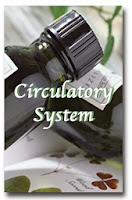 |
| Source: Apre.org |
White foods have gotten a bum rap as being totally worthless when it comes to providing good nutrition. Granted, white bread and white rice can’t hold a candle to fiber-rich whole grain bread and brown rice, but to eliminate white vegetables based on their lack of color is no longer PC in the culinary and nutrition world.
The biggest myth about white veggies is that they are missing healthy phytochemicals. Whereas the phytochemical, beta carotene, provides the orange color to carrots, cantaloupe, and winter squash, and another phytochemical, anthocyanins, gives the purple and red colors in blackberries and purple grapes, white vegetables can also have these plant compounds. Some white foods can contain colorless phytochemcials, as well as other nutrients that make them as nutritiously powerful as their vibrant color cousins in the produce aisle.
Here are 5 white foods that should be on your plate this season:
Cauliflower:
As a member of the cruciferous family, which includes broccoli and Brussels sprouts, cauliflower is a potent source of glucosinolates, a sulfur-containing phytochemical. Glucosinolates break down during cooking and digestion into several active compounds that may help reduce the risk of certain cancers such as prostate and lung cancer. Don’t know how to cook it? Here are
20 healthy recipes.Garlic and Onions:Both garlic and onions, as well as shallots, chives, and leeks, are pungent sources of the phytochemical, allium. Some research suggestions that both garlic and onions may help reduce the risk of stomach, colon, and rectal cancer. Health aside, grilled, roasted, or sautéed garlic and onions will all add so much delicious flavor to vegetable side dishes that you will be able to skip using the salt shaker. Try this
Garlic Green Beans and Onions recipe that doesn’t contain any added salt.
White Beans:White beans (also called navy beans) are chockfull of soluble fiber, which can help lower your blood cholesterol levels. Once consumed, the soluble fiber in the beans latches on to cholesterol in your GI tract and blocks its absorption in the blood. Because beans are also a good source of protein, they also provide satiety, or that feeling of fullness, at your meals. Add them to
soups to keep you warm, healthy, and full as the temperature drops.
Potatoes:For the money and your blood pressure, you can’t beat a traditional baked spud. A cup serving of potatoes (about one small baked potato)
costs less than 20 cents, yet will provide over 650 milligrams of blood pressure-lowering, potassium. Since most Americans are falling short of this nutrient, a potato is a cheap way to fight high blood pressure.
Nutritional bonus: a small baked potato is only 113 calories so do not believe that old wives’ tale that baked potatoes are “fattening.”
Stuff a spud with veggies, lean ham, a small amount of cheese for a filling, but low cost and low calorie meal.
Mushrooms: |
| Source: Mushroom Council |
Since most Americans are falling short of their daily fiber needs, you may want to look to mushrooms to beef up the fiber in your diet. A cup of cooked mushrooms provides more than 3 grams of fiber or over 10 percent of the Daily Value for a waist-friendly, mere 44 calories. Try this
Mushroom Scramble Mug to start your day with a fiber boost.
When it comes to fashionable vegetables to serve and eat this season, consider white is the new black.
Do you have a nutrition topic that you would like me to write about? Please email me at: salge@bu.edu.
Follow Joan on Twitter at: joansalgeblake








































